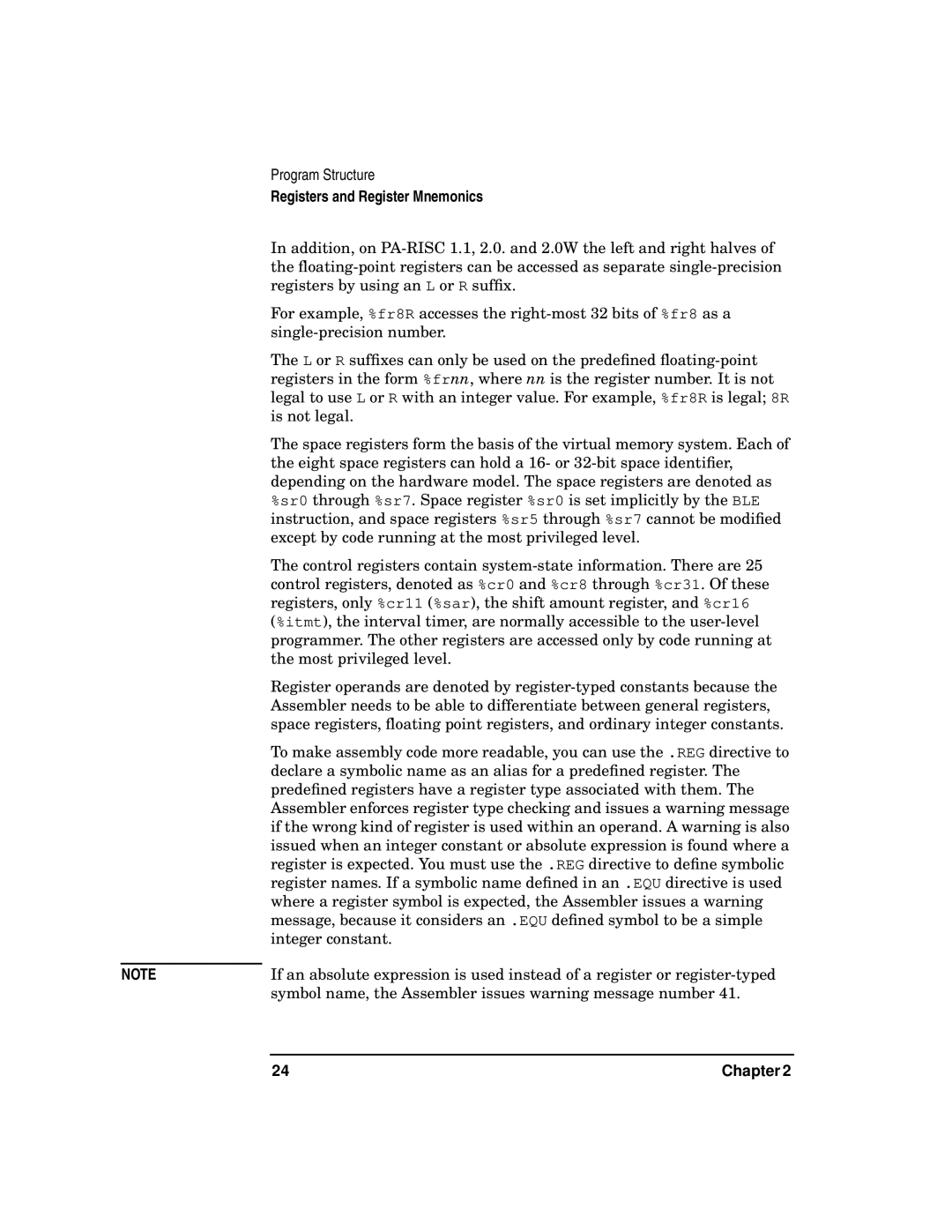| Program Structure |
| Registers and Register Mnemonics |
| In addition, on |
| the |
| registers by using an L or R suffix. |
| For example, %fr8R accesses the |
| |
| The L or R suffixes can only be used on the predefined |
| registers in the form %frnn, where nn is the register number. It is not |
| legal to use L or R with an integer value. For example, %fr8R is legal; 8R |
| is not legal. |
| The space registers form the basis of the virtual memory system. Each of |
| the eight space registers can hold a 16- or |
| depending on the hardware model. The space registers are denoted as |
| %sr0 through %sr7. Space register %sr0 is set implicitly by the BLE |
| instruction, and space registers %sr5 through %sr7 cannot be modified |
| except by code running at the most privileged level. |
| The control registers contain |
| control registers, denoted as %cr0 and %cr8 through %cr31. Of these |
| registers, only %cr11 (%sar), the shift amount register, and %cr16 |
| (%itmt), the interval timer, are normally accessible to the |
| programmer. The other registers are accessed only by code running at |
| the most privileged level. |
| Register operands are denoted by |
| Assembler needs to be able to differentiate between general registers, |
| space registers, floating point registers, and ordinary integer constants. |
| To make assembly code more readable, you can use the .REG directive to |
| declare a symbolic name as an alias for a predefined register. The |
| predefined registers have a register type associated with them. The |
| Assembler enforces register type checking and issues a warning message |
| if the wrong kind of register is used within an operand. A warning is also |
| issued when an integer constant or absolute expression is found where a |
| register is expected. You must use the .REG directive to define symbolic |
| register names. If a symbolic name defined in an .EQU directive is used |
| where a register symbol is expected, the Assembler issues a warning |
| message, because it considers an .EQU defined symbol to be a simple |
| integer constant. |
| If an absolute expression is used instead of a register or |
NOTE | |
| symbol name, the Assembler issues warning message number 41. |
24 | Chapter 2 |
